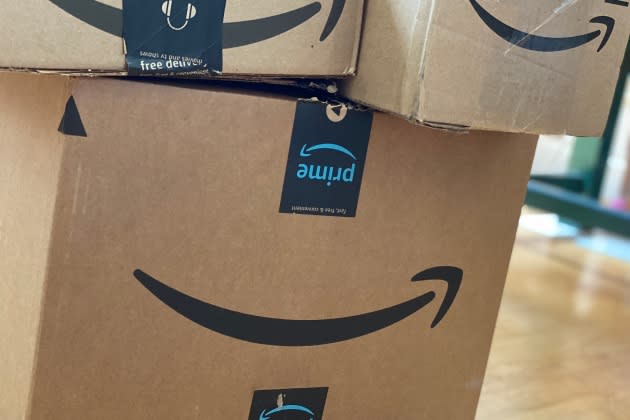Amazon: Cloud, Ads Boom, and Prime to Cost More

Amazon had a great fourth quarter, and its plan to keep the cash rolling in will involve adding $20 to the price of Prime subscriptions.
On Thursday, as the e-tailer disclosed earnings results, it also announced that Prime membership in the U.S. will increase from $119 to $139 per year, in its first price increase since 2018.
More from WWD
As for the quarter ending in December, the company reported net sales of $137.4 billion, an increase of 9 percent year-over-year, and earnings per share of $27.75. Its cloud business, Amazon Web Services, continues to grow, as net sales rolled in at $17.78 billion. Overall, the first holiday period under chief executive officer Andy Jassy beat analysts’ expectations and sent shares jumping 15 percent in after-hours trading.
One key reason for the excitement comes from Amazon’s investment in electric vehicle company Rivian, which went public in November at a valuation of $66.5 billion. But another stems from Amazon’s ad business: For the first time, the company broke out revenues instead of lumping them into its “other” segment, reporting $9.7 billion for a growth of 32 percent year-over-year.
For the full year, net sales of $469.8 billion showed 22 percent growth over 2020. Operating income rose to $24.9 billion, versus $22.9 billion the previous year, and net income of $33.4 billion dominated 2020’s $21.3 billion.
Of course, Amazon racked up plenty of expenses, as well. But Jassy seemed to take it in stride, as part of now-familiar pandemic effects: “As expected over the holidays, we saw higher costs driven by labor supply shortages and inflationary pressures, and these issues persisted into the first quarter due to Omicron,” he said. “Despite these short-term challenges, we continue to feel optimistic and excited about the business as we emerge from the pandemic.”
Investors seem to agree, despite lower-than-expected guidance for the first quarter of 2022. Instead of the $120 billion expected, Amazon estimates put the range between $112 billion and $117 billion.
“Amazon’s fourth-quarter goal was to build enough people capacity to match their ability to fulfill orders. While they may have taken a profit hit, the bet will likely pay off,” said Julian Skelly, retail lead at digital consultancy Publicis Sapient. “Our research suggests that consumers plan to continue online shopping — having enjoyed the convenience, speed and flexibility of e-commerce. They don’t link it to the pandemic and see it more as a lifestyle choice.”
According to Amazon, the last Black Friday to Cyber Monday shopping period was its biggest ever, with apparel, beauty, home and toys among its bestselling categories.
Among other highlights, it also spotlighted the upcoming opening of Amazon Style, its physical apparel store in Los Angeles that plans to use machine learning for tailored recommendations as people shop. The company also plans to give customers tech features, like the ability to send items to a fitting room by tapping a button in the app.
Whether shoppers immediately flock to brick-and-mortar Amazon apparel stores may or may not matter, as the company can wait things out and keep experimenting, if need be. It’s padding its wallet in other ways — like the Prime price increase.
It’s the third time, as it introduced similar $20 bumps in 2014 and 2018. The company believes Prime offers more value now, with the rollout of Free Same-Day Delivery to more places, more Prime-eligible products in the marketplace and expansions across prescriptions, Amazon Music, Prime Reading and Prime Gaming. At the same time, it has been facing rising costs, it said.
The change will kick in later this month for new enrollees and after March 25 for current subscribers, upon their renewal date.
Publicis Sapient’s Skelly called it “an interesting move — one that underlines their overall confidence. They are betting that U.S. customers will value the package more than the $20 hike in annual subscription costs. This comes at a time when overall digital spending is on the rise.
“Amazon is betting that people will try and squeeze as much out of the subscription price by putting more of this extra spend their way.”
Now, Amazon looks like it’s not as dependent on retail sales as they once were, he added, given alternate revenue streams from ads and AWS’ noteworthy 40 percent year-over-year growth. “As the world ramps up investment in online,” he said, “the Amazon Web Services cloud business and their digital advertising revenue will climb and help smoothen out any challenges in retail.”
Sign up for WWD's Newsletter. For the latest news, follow us on Twitter, Facebook, and Instagram.
